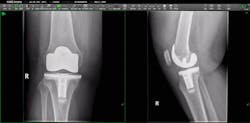Imagine I have a terrific new camera for sale that takes great pictures. But to use it, you have to buy the software from me. And by the way, to store these images, you’ll need to buy that software from me, too. Want to share those pictures with your family and friends? More software. Now if your friends and family want to view them, well, you know how the story goes.
While this scenario wouldn’t be tolerated in retail, it frequently happens in the healthcare industry. Proprietary clinical IT systems such as picture archiving and communications systems (PACS) have healthcare organizations locked into single imaging solutions that can make image storage and management, as well as sharing images within and outside the enterprise, extremely complicated and costly.
PACS require expensive upgrades and migrations
PACS are known for driving high-cost data and image migrations. Simply adding a new storage platform can increase cost for proprietary migrations of imaging data to the new platform. Storage platforms can be very disruptive technology, often resulting in upgrades every three to five years to meet increasing system demands and overcome costly storage maintenance that can result from legacy platforms. From higher exam volumes to increasing images per exam, to new storage systems and upgrades, reinvesting in PACS is both necessary and required to maintain necessary quality and efficiency. However, upgrades of these storage solutions can be expensive, and maintaining traditional proprietary PACS just adds to this cost. In fact, more than two-thirds of healthcare enterprise IT budgets are currently devoted to just maintaining existing infrastructure.
Data migration is also needed as PACS become outdated and require upgrades or need to be replaced. This can be a time-consuming process that can be very costly from both a financial and a resource standpoint. For example, radiology departments tend to change or modify PACS about every three to five years. This traditional archive strategy, including conversion, migration, and project management, costs organizations such as The Children’s Hospital of Philadelphia $2.84 million per year on average.
Realizing value with a mature VNA
Before healthcare reform, it was easy to justify a $5 million spend on a new PACS for a department that was responsible for a third of the healthcare delivery organization’s (HDO’s) incoming revenue. Today, however, with the shift to value-based reimbursements and bundled payments, imaging departments are starting to be viewed less as revenue centers and more as cost centers. As a result, HDO leaders are under increasing pressure to find more efficient ways to deliver imaging solutions that can maintain quality and efficiency while reducing operating expenses.
Implementing a vendor-neutral archive (VNA) can be the first step to achieving this end. A true VNA is a mature technology that can be installed either in conjunction with traditional PACS or increasingly as a replacement of traditional PACS to improve access and significantly reduce storage and migration costs. It can eliminate vendor lock and block, improve data and imaging exchange, consolidate and centralize imaging storage, and improve overall IT management. But more importantly, it can provide a solution that can last 10-15 years or longer, virtually eliminating disruptive and expensive PACS replacements while allowing the HDO to take complete ownership of its imaging assets through the development of an enterprise imaging strategy. This can result in a best practice imaging model that can be of significant help in positioning the HDO for value-based reimbursement changes that are coming its way.
Piedmont Healthcare provides a good example of the type of cost savings a healthcare organization can realize. Since implementing a VNA, Piedmont has saved more than $700,000 and expects an additional $2 million to $3 million in savings as they move additional PACS over to the enterprise imaging model. These savings are largely a result of reduced maintenance and data migration costs.
The right VNA solution delivers numerous cost-savings benefits, including tearing down data silos, eliminating proprietary vendor formatting, consolidating hardware and software purchases, consolidating maintenance into a single imaging archive, and avoiding costly PACS data migrations. By implementing a mature VNA within an enterprise imaging strategy, you can help your organization begin to drive greater value for years to come.



